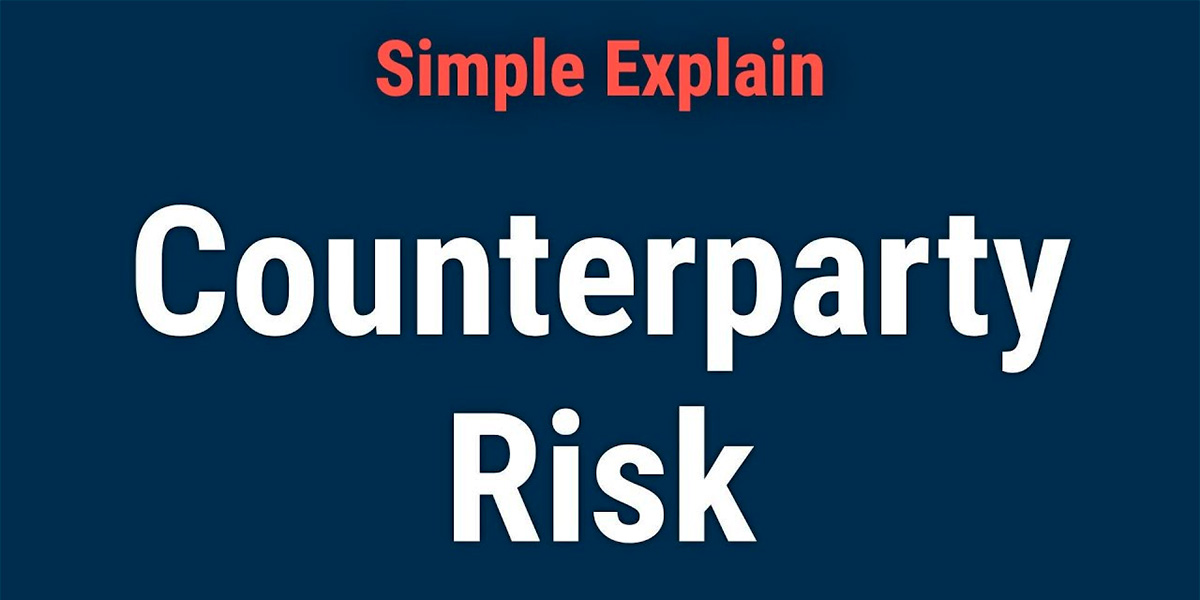Counterparty risk is the chance that the other party in your financial deal won’t hold up their end of the bargain. This can lead to huge losses and even shake the foundations of the financial system—a sobering thought, right? Financial institutions, like the one potentially reaching out to you now, worry about this risk because a default can cause a cascading effect of failures across interconnected entities.
Measuring exposure to counterparty risk effectively starts with thorough due diligence. Review credit ratings, financial statements, and credit reports to gauge creditworthiness. Use real-time data analytics tools for continuous monitoring. These tools alert you to shifts in financial health, allowing proactive adjustments. Setting maximum exposure limits and fine-tuning them based on the counterparty’s risk profile and current market conditions is crucial for mitigating potential losses.
To manage counterparty risk, it’s essential to diversify your exposures, conduct ongoing monitoring, and establish clear controls. Implement risk mitigation techniques like collateral and credit default swaps and stay updated on regulatory changes, which guide best practices in risk management. Platforms offering real-time risk analytics and automation tools make this easier, especially for smaller businesses with limited resources. By embedding these practices into your broader risk management strategy, you’ll enhance your organization’s resilience in volatile markets and safeguard your financial dealings.
What Is Counterparty Risk And Why Should Financial Institutions Be Concerned About It?
Counterparty risk is the risk that the other party in a financial transaction won’t meet their contractual obligations. You should be concerned about it because if the counterparty defaults, it can cause you significant financial losses and disrupt the financial system.
This risk exists in several transactions, such as lending, investing, and derivatives trading. To manage counterparty risk, financial institutions take various measures, including:
- Monitoring credit scores
- Applying risk premiums
- Ensuring diversified banking partners
Lastly, keep a close watch on counterparty risk to avoid potential financial setbacks and ensure stability in your financial dealings.
How Can Businesses Measure Their Exposure To Counterparty Risk Effectively?
To measure your exposure to counterparty risk effectively, you should start with thorough due diligence. Review credit ratings, financial statements, and credit reports to gauge the creditworthiness of your counterparties.
It’s important that you implement continuous monitoring of the counterparty’s financial health. Keep an eye on financial news, credit rating updates, and market conditions that may affect their ability to meet obligations.
Utilize risk management tools that offer real-time credit risk analytics. Systems like Quantifi can provide comprehensive credit risk measures and automate your credit management processes.
You should also define maximum exposure limits in your counterparty risk management policy. Adjust these limits based on the counterparty’s risk profile and current market conditions.
To avoid concentration risk, spread your financial dealings across multiple counterparties. This diversification reduces the impact if one defaults. Implement collateral agreements, such as ISDA’s Credit Support Annex (CSA), to secure exposures and mitigate losses if a counterparty defaults.
Join settlement systems like Continuous Link Settlement (CLS) for trading transactions, ensuring both legs of a trade are settled simultaneously, which mitigates settlement risk.
Regularly reassess and adjust your risk management strategies and counterparty exposure. Make dynamic adjustments as needed based on evolving risks and market changes.
Finally, by performing due diligence, continuous monitoring, using risk management tools, setting exposure limits, diversifying counterparties, implementing collateral requirements, and regularly reassessing your strategies, you’ll be in a stronger position to measure and manage your counterparty risk effectively.

What Are The Key Strategies For Managing Counterparty Risk In Today’s Market?
To effectively manage counterparty risk in today’s market, you need several key strategies:
- You should consistently conduct thorough due diligence to investigate and assess the financial stability, creditworthiness, and reputation of your counterparties. Do this both during initial onboarding and continuously thereafter.
- Diversify your exposures by spreading risks across various counterparties and asset classes to reduce the impact of any single failure.
- Use sophisticated software tools to implement comprehensive monitoring. Monitor exposures, simulate stress scenarios, and adjust strategies based on current market conditions. Regular assessments help you identify potential default risks early.
- Establish clear limits and controls. Define maximum exposure limits and maintain stringent controls to manage credit limits and collateral requirements effectively.
- • Employ credit risk mitigation techniques such as collateral agreements (like CSAs under ISDA) and netting arrangements. Joining multicurrency cash settlement systems like Continuous Link Settlement (CLS) also reduces settlement risk.
- • Maintain sufficient capital buffers to cover potential losses, aligning with a proactive risk management approach.
- • Stay informed on regulatory changes. Keep up with regulatory updates and guidelines from the Basel Committee to ensure compliance and adapt your risk strategy accordingly.
In closing, by conducting due diligence, diversifying exposures, implementing comprehensive monitoring, establishing controls, using credit mitigation techniques, maintaining capital buffers, and staying informed on regulations, you create a robust risk management framework tailored to your needs.
How Do Regulatory Requirements Influence The Management Of Counterparty Risk?
Regulatory requirements significantly influence how you manage counterparty risk. They make sure financial institutions follow best practices in risk management to minimize the impact of a counterparty’s default. You must perform thorough client due diligence during onboarding and on an ongoing basis, assessing your counterparties’ financial health consistently.
Regulators such as the Basel Committee and the Federal Reserve provide guidelines to improve counterparty credit risk management. You need to strengthen your risk assessment processes, ensure robust collateral and margining practices, and maintain enough shock-absorbing capacity. High-risk entities like non-bank financial institutions and commodity traders often require special attention.
You should implement rigorous monitoring of exposures, diversify funding options, and maintain robust relationships with various financial counterparties. Regularly review and update your risk management policies to stay compliant and competitive.
Overall, regulatory requirements push you to adopt a proactive, comprehensive approach in managing counterparty risk, helping stabilize the financial system and mitigate potential imbalances.
What Role Did Counterparty Risk Play In The 2008 Financial Crisis?
Counterparty risk played a crucial role in the 2008 financial crisis. When one party defaults on a contract, it directly impacts you if you’re the other party involved. Many financial institutions were heavily interconnected through complex contracts, especially in the over-the-counter (OTC) derivatives market. This interconnectedness meant that the default of one institution could create a chain reaction, affecting numerous other entities.
For instance, if you were involved in securitization, you might have sold mortgages, including risky subprime loans, to larger banks. These banks repackaged them into mortgage-backed securities (MBS) and collateralized debt obligations (CDOs), which were then sold to investors worldwide. When homeowners began defaulting, the value of these securities plummeted. This caused massive losses for anyone holding them and revealed the hidden risks and interdependencies in the system.
You also faced liquidity pressures as borrowers drew on prearranged credit lines due to disturbances in credit markets. You had to honor these commitments, even as your own liquidity was drying up, worsening the crisis.
There were also clusters of counterparty risk among a few highly interconnected banks. If a core institution defaulted, it not only increased its own default risk but also impacted peripheral institutions linked to it.
As a final point, remember the 2008 crisis highlighted the need for better risk management, transparency, and oversight in the financial industry, especially regarding counterparty risk, to prevent future widespread failures.




